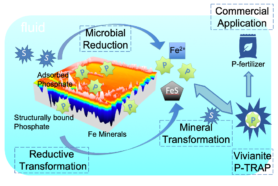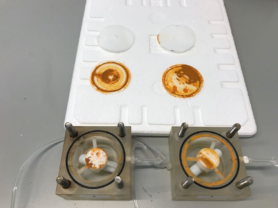Mingkai Ma

Fig. 1: Me in Scheffau, Austria (Oct 2019)
Hi, I am Mingkai Ma, ESR 6 from Utrecht University. My research is focused on the kinetics and mechanism of reductive transformation of P containing Fe(III) oxides with special emphasis on the P dynamics (mobilization vs immobilization via vivianite formation).
Before I started my PhD, I`ve been focusing on the Soil Mineral – Organic Matter – Microorganism interactions, and obtained my bachelor and master`s degree in soil science (more in soil biochemistry) at Huazhong Agricultural University, China. My bachelor thesis is about the adsorption of heavy metal (Cadmium) onto organic matter-mineral binary system. During my master, I mainly focus on the interaction between mineral (goethite) with microbes (P.putida) by using atomic force microscope. After my graduation, I worked shortly at HZDR as a researcher in Leipzig, Germany.
I have started working on the first day of Dec 2019 under the supervision of Thilo Behrends and co-supervision of Andreas Voegelin. After I settle down at Utrecht, the Netherlands, I found myself really enjoying working with many great and lovely geochemists from Geochemistry group, in a cool Geolab. Most of my job will be done in the lab.
Reductive dissolution of Iron (hydr)oxides by dissolved sulfide is important in regulating the cycling and mobility of phosphate in aquatic systems. In sediments, phosphate can either be released by the sulfidation process with iron (hydr)oxides, or be mobilized by re-adsorption or via vivianite (Fe3(PO4)2×8H2O) formation. Although it is widely accepted link between phosphate release and sulfidation of Iron (hydr)oxides, study about the dynamics of phosphate is scarce.
Main objectives of my part of research are shown in the schematic (Fig. 2).

Fig. 2: Schematic of objectives
As a starting point, experiments about phosphate release during the sulfidation of lepidocrocite in flow-through-(bio)reactors is now ongoing. Reactors with filter and membrane which we used now allow to retain solids in the reactor and constantly manipulating (inflow) and monitoring (outflow) the composition of the solution. A main objective is to evaluate whether vivianite formation can occur upon partial sulfidation but also the kinetics and extent of P mobilization are of interest. In a later stage, possibly also microbial reduction will be investigated as another principal pathway for reductively induced Fe mineral transformation.
 |
 |
|
Fig. 3: Flow-through reactor setup. |
Fig. 4: Testing the recovery of reacted solids at the end of the experiment. |
I work closely with ESR11 (Melanie Münch, UU) and ESR3 (Victoria Barcala, Deltares), we share protocols for chemical analysis, have weekly group meetings together and will have field campaign soon. My planned secondments will be at UNIVIE to work with ESR10 (Rouven Metz) about microbial reduction in bioreactors, and will be at the University of Bayreuth to learn Mössbauer spectroscopy with ESR1 (Xingyu Liu) and ESR9 (Karel As). The last secondment will work with our non-academic partner organization, AQUAMinerals, to think about the application of Fe containing by-productsto scavenge sulfide in bioreactors. Besides, together with ESR7 (Ville Nenonen, EAWAG) we made a start in collaboration, e.g. shared beamtime at ANKA (Karlsruhe, Germany) is planned for this June.
In my free time I enjoy playing various video games, DOTA2 is my favorite game. I also love music. Swimming is the only sports I`d like to take for now. Since I`m currently staying in the Netherlands, hopefully cycling will be an extra option for the next coming years.

